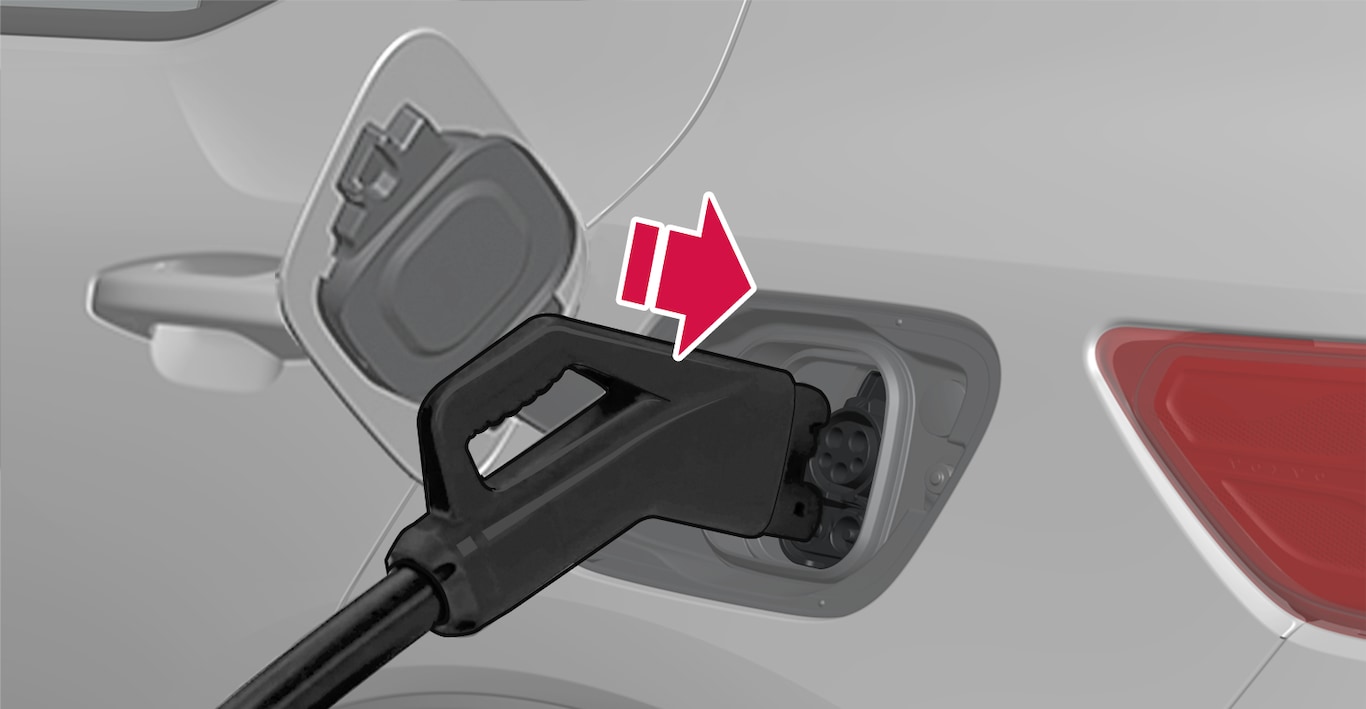Important
Important
Note
Warning
- The high voltage battery must only be charged at maximum permitted charging current or lower in accordance with applicable local and national recommendations for charging from 230V sockets (alternating current)/plugs.
- Charging the high voltage battery must only take place from an approved grounded 230 V socket2, from a charging station with a permanent charging cable or from a charging station with a loose charging cable (Mode 3) supplied by Volvo.
- The control unit's ground fault breaker protects the car, but there may still be a risk of overloading the 230 V mains power circuit.
- Avoid visible worn or damaged mains sockets since they may lead to fire damage and/or personal injury if used.
Warning
- The charging cable has a built-in circuit breaker. Charging must only take place with grounded and approved sockets.
- Children should be supervised when in the vicinity of the charging cable when it is plugged in.
- High voltage in the charging cable. Contact with high voltage can cause death or serious personal injury.
- Do not use the charging cable if it is damaged in any way. A damaged or inoperative charging cable must only be repaired by a workshop - an authorised Volvo workshop is recommended.
- Always position the charging cable so that it will not be driven over, stepped on, tripped over or damaged in some other way, or cause personal injury.
- Disconnect the charger from the wall outlet before cleaning it.
- Never connect the charging cable to an extension cord or a multiple plug socket.
- Do not use one or more adapters between the charging cable and the electrical socket.
- Do not use an external timer between the charging cable and the electrical socket.
Also, refer to the manufacturer's instructions for using the charging cable and its components.
Important
Check that the 230 V socket (alternating current) has adequate power capacity for charging electric vehicles – in the event of uncertainty, the socket must be checked by a qualified professional. If the power capacity of the socket is unknown – use the lowest amperage in the centre display.
Connect the charging cable to the charging station or a 230 V socket.
If the charging station has a permanent charging cable, proceed to Step 2.

Open the charging hatch. Remove the charging handle's protective cover and make sure there are no objects in the charging input socket that may prevent charging.
Then press the handle the whole way into the socket for the car.
Important
The charging cable's charging handle is fastened/locked in, and charging starts within 5 seconds. When charging has started, the LED lamp in the charging input socket flashes green. The driver display and the centre display show the remaining estimated charging time or whether charging is not working as intended.
Charging can be interrupted for a short time by pressing the button at the charging input socket – charging resumes within a few minutes.
Important
Never unplug the charging cable from the 230 V socket (alternating current) while charging is in progress - there is then a risk of damaging the 230 V socket. Always stop charging first before unplugging the charging cable from the car's charging input socket and then from the 230 V socket.
Important
Fast charging (direct current)
The car's high voltage battery can be fast-charged with direct current via charging stations supporting the CCS (Combined Charging System) standard.
Note

Fast charging will not normally be interrupted if the car is unlocked. Charging can be interrupted using the button at the charging input socket. If fast charging is stopped, it will not be possible to resume it automatically as the charging station requires charging to be reauthorised.